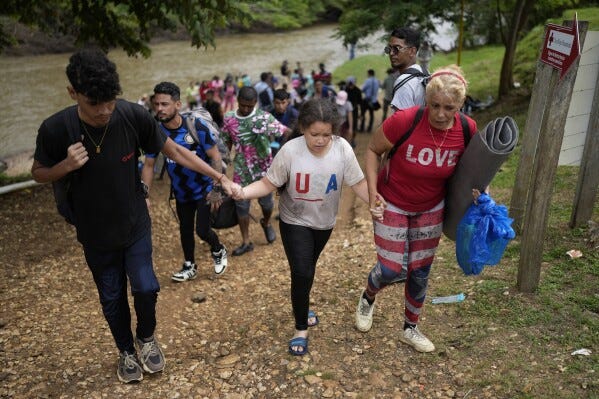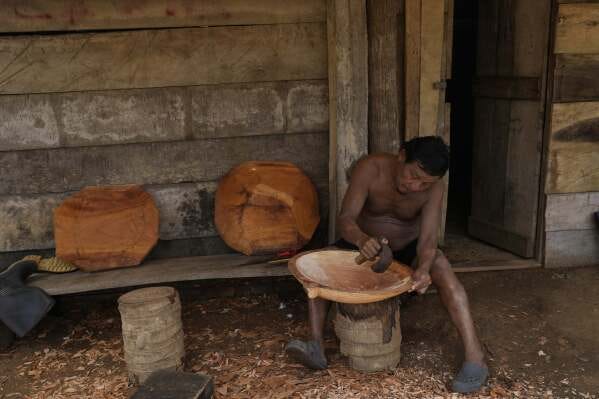Notes from the edge of civilization: April 20, 2025
Not satire! COVID.gov, now with extra drama; inside the Influence Industrial Complex; bungle in the jungle.
Skeptical minds like ours didn’t put COVID.gov at the top of the list of most trusted resources during the pandemic, but at least until recently it did what government websites are supposed to do: offer up some “how to get tested” and “where to find help” kind of information. Boring, but expected.
Well, not anymore.
The site just had an incredible makeover — and not the quiet kind. Think less ‘updated resource hub’ and more Hollywood Presents: The Pandemic Files.
The site now centers on a theory that got people banned from social media not too long ago. Right at the top: the words LAB LEAK, in bold all-caps, with a picture of Trump mid-stride looking like he’s about to storm CDC headquarters with a bullhorn and a copy of The Art of the Deal. It gives off big ‘we told you so’ vindication tour vibes.
In short: it’s not what you’d expect from a government website — but it’s exactly what you’d expect from the Trump White House: public service announcement meets reality show promo poster. Amazing feat, really.
Does all this feel ‘psyop-y’? It might be. William Casey, the director of the CIA in the 1980s, said: "We'll know our disinformation program is complete when everything the American public believes is false."
How does someone go from “Most Wanted” to “Most Influential”? It’s a jarring moment when Syria’s interim president, Ahmad al-Sharaa — who until recently had a $10 million bounty on his head for his role as an al-Qaeda affiliate — lands on the 2025 TIME100 list.
Every year, TIME magazine unveils its roster of the “most influential” people shaping our world. But what, exactly, are the people on this list doing with their influence? It runs the gamut: launching rockets, killing minorities, locking down the world, toppling regimes, and suppressing dissent, among other things. The 2025 list certainly raises some eyebrows, and some questions.
Al-Sharaa, formerly Abu Mohammad al-Julani, led a rebel alliance before the West helped him rebrand as a pragmatic liberationist. His Hay’at Tahrir al-Sham ‘toppled’ Bashar al-Assad in late 2024, which is what earned him a spot on TIME’s list alongside Elon Musk, the WHO’s Tedros Adhanom Ghebreyesus, and Mexico’s Claudia Sheinbaum. Yet, allegations of massacres in Syria — where over 1,000 Christian Alawites were slaughtered last month — cast a dark shadow on his inclusion on the list. Still, that didn’t stop TIME.
Question is: Is this the face of influence or impunity?
You haven’t heard much coming from the Darien Gap these days.
Not that long ago, crossing the Darien Gap was a frightening nightmare for migrants making their way north to the US border.
The dense rainforest at the Gap connects North and South America and is full of venomous snakes and armed bandits. When migrants from around the world made the treacherous journey for a shot at the US, they were almost certainly exploited by smugglers, faced injury, dehydration, rape, and even death. It was — and remains — an illegal, dangerous, humanitarian mess.
But for locals in villages like Villa Caleta, Panama, the deadly journey was a gold mine until recently. People living in those towns made money ferrying migrants, and selling them food, clothes, SIM cards, and access to power banks to charge their phones. Meanwhile, they used that cash influx to buy themselves solar panels, TVs, and water pumps.
The migrant flow has since dried up with Donald Trump in office; now the Associated Press is reporting the collapse of the local economy. People in those jungle towns are once again just scraping by planting rice or panning for gold.
The AP photo essay frames this ‘boom-to-bust’ saga as a tragedy for these communities, which is rather warped. It’s bizarre to see the focus on lost profits from an illegal, exploitative trade with nearly no mention of how the slowing migration means fewer people are risking their lives, fueling criminal networks, and flowing into the US.
The migration was unsustainable and dangerous, not just for the migrants but for the region’s stability and for America’s safety. So, it’s an odd, if not out of touch, journalistic choice to mourn the ‘good old days’ of a crisis-driven economy with such a high human cost.







“Most Wanted” to “Most Influential”. And the ostriches keep on ostriching.
boom-to-bust
I know people still trying to spend the money they made during the American Prohibition. Governments distort markets and local economies in so many ways.